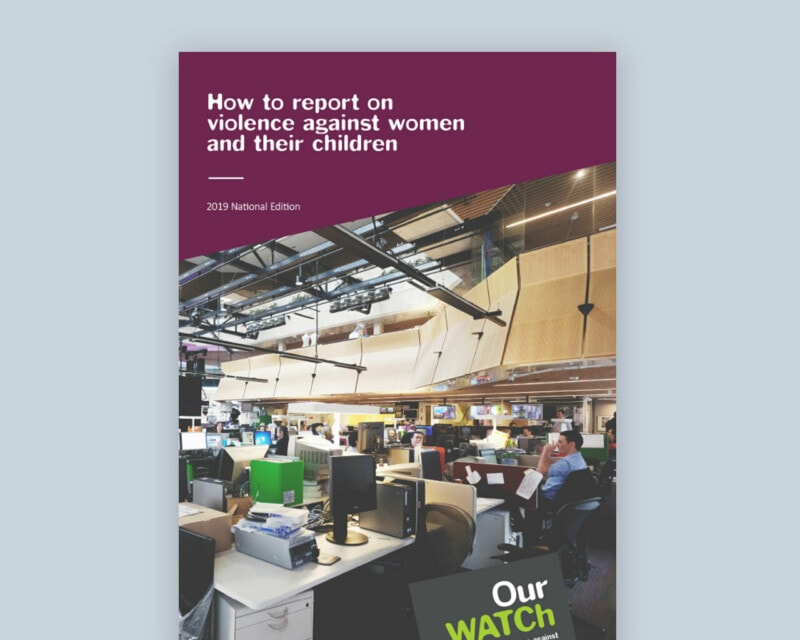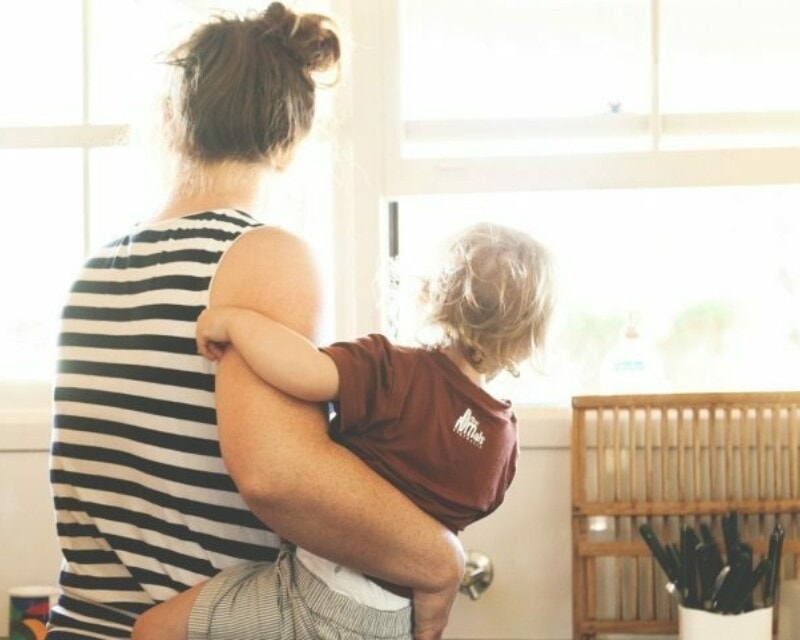On this page
Improving media reporting on violence against women and children extends to imagery.
Overview
Images and vision are vital to telling a story and can be a powerful way to improve community understanding of violence against women. When used sensitively, they can contribute to ending harmful stereotypes of violence, victim-survivors and perpetrators.
As well as photography and video, illustrations, iconography and cartoons should be considered in the creation of new visual assets, as they are effective and can make content more accessible to people with low levels of literacy or reduced cognitive function.
Using a strengths-based approach
Use a strengths-based approach when creating and choosing images, thumbnails and footage. A strengths and rights-based approach centres women, their agency, and affirms their basic human right to live free from violence.
When choosing or creating images, ask yourself what they say about a person and why the violence occurred.
- Be positive, respectful, and strengths-based in your image creation and selection.
- Ensure that the images reflect the diversity of the population, particularly for groups that experience the highest rates of violence, including trans women, Aboriginal and Torres Strait Islander women and women with disabilities. Depict women of a variety of ages, ethnicities, abilities/disabilities and backgrounds in roles and settings that show agency, skill and mastery. Avoid stereotypical gender role depictions.
- Show women and their children in places of safety and security.
- Demonstrate connection with communities to portray a sense of shared responsibility and support, rather than victim-survivors in isolation.
- Use images that show woman and men in normal everyday social settings to normalise where violence occurs.
- Use imagery that challenges traditional gender norms, for example by avoiding stereotypical roles and responsibilities in professional and domestic work.
- Consistently using images of women in domestic roles in reporting on violence against women can reinforce the perception that violence is a woman’s problem and should remain in the private sphere, behind closed doors.
- Captions are vital to provide context and meaning. Ensure they reflect preferred language and framing. Clarify if images have been staged or if they portray victim-survivors. Make sure alternative text for online images reflects a strengths-based approach.
- Consider the longevity of images and how they are used and reused over time, including the impact of the images on people who are part of the image creation. Have a clear procedure for retiring images in your database.
Image tips when working with victim-survivors
Support respectful image use and creation when working with victim-survivors.
Survivors have been through trauma. The way you treat them in the image-making process and depict their story may impact their recovery. Consider the impact the image – and the image-making process – may have on the victim-survivor, their family, or on other survivors of violence. Ensure they have access to support throughout the reporting process.
When choosing images of victim-survivors:
- show the humanity, resilience and strength of women and non-binary people
- be respectful. Consider what the chosen imagery says about them. Do not use images from social media without permission
- where domestic violence has occurred, using images portraying the couple as previously happy can create a false narrative about the relationship, or imply the perpetrator has done nothing wrong.
When creating images of victim-survivors:
- involve victim-survivors in the image-making process. Ask them how they would like to be represented
- ensure the image-making process is trauma-informed, and victim-survivors have agency over the way they are depicted. When fitting microphones or posing them, be mindful that they may have fear or trauma around being touched
- re-enactments can be very triggering for victim-survivors, so ensure you have their consent first
- give victim-survivors the opportunity to view images and re-enactments ahead of going to air.
Portraying violence
Showing or implying violence in imagery can contribute to an inaccurate or stereotyped idea of who experiences violence and what it might look like. This can be retraumatising for victim-survivors and can reinforce misconceptions about violence against women or its drivers.
Stereotyped depictions of violence can also mean that women who do not fit these stereotypes may not realise what has happened to them is violence or may not be believed if they report it.
Stereotypes to avoid include men with clenched or raised fists, and women depicted as passive, fearful or cowering. When reporting on rape, avoid images presenting women as young, white and conventionally attractive or overtly sexualised. Avoid depicting men as monstrous, large and/or physically threatening. Include settings such as domestic scenes or secluded outdoor settings.
Evidence indicates that stereotyped portrayals of violence may:
- shape public opinion through perpetuating myths, for example around why rape occurs
- perpetuate gender stereotypes that victims are passive and lack agency, and that victimhood is shameful. This can solidify a negative sense of victimhood, make the violence seem more inevitable, or make it feel harder for a woman to seek help
- feed into victim-blaming.
When reporting on violence against women, if the only images used are of physical violence, this minimises and disguises other forms and patterns of violence that occur, such as coercive control, technology-facilitated abuse, and psychological, sexual and economic violence.
Use images which show alternatives or a way out such as:
- images of women in safe and secure situations where they have control and autonomy in their lives
- women in confident postures, leaving abusive situations with determination, being in safe spaces with supportive people, in positive scenes with children, receiving support from others, in open spaces, appearing strong, capable and with agency in their safety and future.
- use light and colour to demonstrate the positivity of the change, while still being mindful and respectful of the challenges these women might face
- use infographics or charts showing statistical data on violence instead of misleading photographs or video.
Imagery tips for reporting on violence and abuse
Consider if imagery and multimedia:
- sexualises victim-survivors with suggestive images, or portrays female and non-binary people in tight or revealing clothes
- reinforces gender stereotypes
- sensationalises or minimises violence or harassment
- implies or shows a power imbalance, including imagery which disempowers, victimises or infantilises victim-survivors, or that reinforces the idea that only physical violence is serious. This can include ‘clenched fists’ or ‘cowering women’ imagery, photos of survivors or victims taken from a height to make them appear small, or where they are asked to ‘look sad’ or ‘helpless’
- sends messages of disconnection and distance, for example by using silhouettes or images of women’s backs
- portrays or implies that men who use violence are monsters and cowards, or conversely heroes or good guys
- is culturally safe and appropriate. Ensure you have consulted with Aboriginal and Torres Strait Islander community members to ensure your image use is in line with community protocols.
Guidance for producers and editors
Image audit
- Audit your image and video collection and plan to delete anything that explicitly shows graphic depiction of violence or does not show women in a strengths-based light.
- Create a plan to create or source new imagery based on the gaps you find in your collection.
Briefing photographers and image makers
- Create a briefing document that reflects these guidelines and your own requirements for the creation or sourcing of strengths-based imagery. Include this in any new image-making briefs you create.
- Use this tipsheet and other resources to build your ‘do’s and don’ts’ to ensure new imagery meets guidelines. Make sure suppliers understand and commit to this aspect of the brief.
Build capacity of suppliers and stakeholders
- Share this guide and other resources with your in-house staff and suppliers, make the project of improving imagery a collaborative practice to build everyone’s capacity.
Finding talent
- Source diverse talent when commissioning photographic or video work. Talent or models in stock photography should include Australian women of a variety of ages, ethnicities, abilities/disabilities and backgrounds.
Permissions and consent
- Use age-appropriate talent and releases.
- Use the simplest language possible in permission documents to support accessibility and capacity to consent. Avoid complex legal language where possible.
- Ongoing consent – if talent was under 18 at time of permission by a parent or guardian, seek refreshed permission and consent on turning 18 or ensure ongoing permission is established at time of permissions and is well explained.
- Seek ongoing consent if images are planned to be in use for a long time– especially from victim-survivors.
- If working directly with victim-survivors, refer to our guidance and involve survivors in the image-making process. Ensure you are planning an image-creation process is that is trauma-informed.
The local context
- Use Australian or Australian-looking locations and lighting. Show rural and regional settings as well as urban areas. Urban areas should look like Australian urban areas.
- Ensure that the images reflect the diversity of the Australian population, particularly for groups which experience highest rates of violence, including trans women, Aboriginal and Torres Strait Islander women, older women and women with disabilities.
Related

3 minute read
Evidence-based tips for journalists reporting on violence against women.

6 minute read
Survivors play a critical role in the change needed to end violence against women and their children.